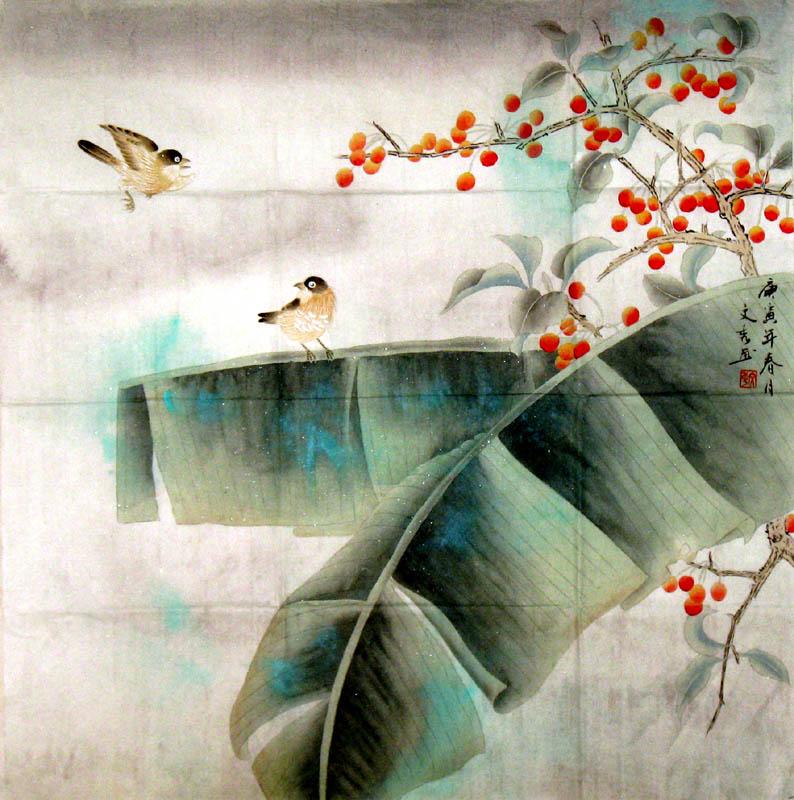Chinese Leaves Painting
Chinese Leaves Painting
Leaves can help in identifying a flower. They give a sense of strength and support and often provide a balance between light and dark, flexible or stiff. When viewed as yin and yang, the flowers are feminine and the leaves masculine. The lotus below shows this very well. The flower is protected by the leaf.

 The first two usually need to be formed from a "centre tip brush" or "side tip brush." If a second stroke is added to the first, you can choose whether to place both tips to the centre of the leaf, both tips to the outer edges, or one tip to the centre and one to the outer edge. Experiment with these different methods of forming the leaf to see which you prefer and which would best suit the subject. Above all, do not allow leaves to be boring- vary the length and width of the brush strokes, as well as the space between the leaves. Ensure that there is color variation in the leaves, either ink or pigment. It is usual to paint leaves with the brush traveling from stem to tip. However, sometimes it is better to do it in the opposition direction: when the tip of the leaf is very important and the plant grows in a clump formation, you do not want to emphasize the base of the plant. The way in which the brush is placed on the paper and then lifted off affects the results. Lift the brush vertically to achieve a rounded end.
The first two usually need to be formed from a "centre tip brush" or "side tip brush." If a second stroke is added to the first, you can choose whether to place both tips to the centre of the leaf, both tips to the outer edges, or one tip to the centre and one to the outer edge. Experiment with these different methods of forming the leaf to see which you prefer and which would best suit the subject. Above all, do not allow leaves to be boring- vary the length and width of the brush strokes, as well as the space between the leaves. Ensure that there is color variation in the leaves, either ink or pigment. It is usual to paint leaves with the brush traveling from stem to tip. However, sometimes it is better to do it in the opposition direction: when the tip of the leaf is very important and the plant grows in a clump formation, you do not want to emphasize the base of the plant. The way in which the brush is placed on the paper and then lifted off affects the results. Lift the brush vertically to achieve a rounded end.
In Chinese brush painting, it is not usual to show the ground level. As in other categories of subject, the important element is the attitude of the plant- it must look as if it is growing, and therefore clustered at the base in a believable fashion. This is easier to achieve by starting at the tip of the leaf and pulling the brush downward and off the paper gradually, which gives a poorly defined base to the leaf and adds to the illusion of a clump of leaves gathered together in a three-dimensional way. There are also times when you will need to "show the tip" or "hide the tip" of the stroke you make. A cluster of bamboo leaves is a good example of this, where some leaves are shown toward the viewer.



